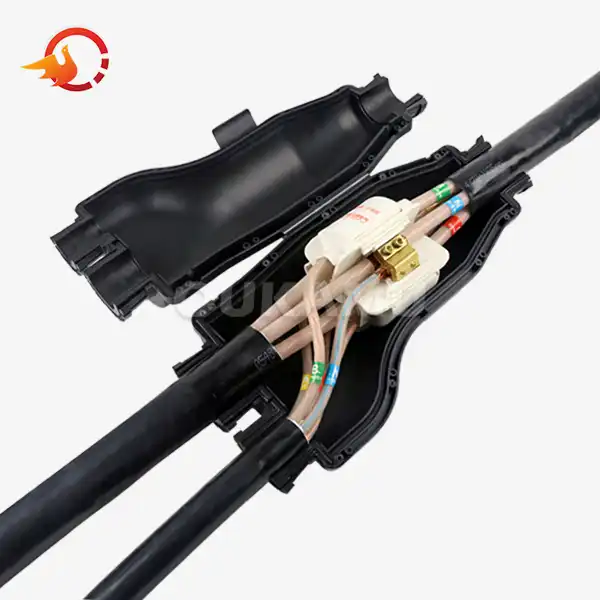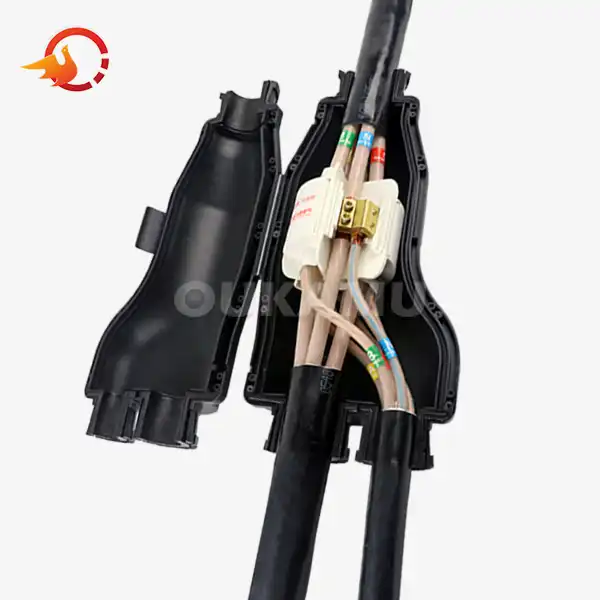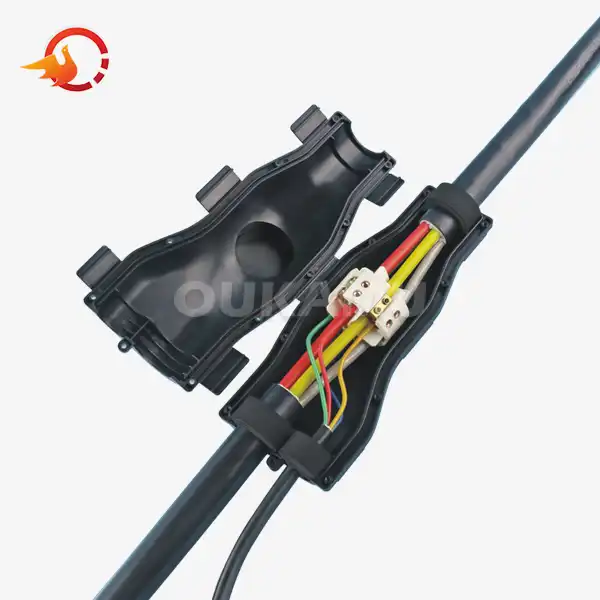How to Choose the Best Cell Pack Cable Joint Kit for Your Supply Chain Needs?
 2025-07-09 07:59:38
View:389
2025-07-09 07:59:38
View:389In today's fast-paced industrial world, efficient and reliable electrical connections are crucial for maintaining smooth operations. The Cell Pack Cable Joint Kit has emerged as a game-changer in this domain, offering innovative solutions for cable connections. This comprehensive guide will walk you through the process of selecting the ideal Cell Pack Cable Joint Kit to meet your specific supply chain requirements.
Understanding the Importance of Cell Pack Cable Joint Kits in Supply Chain Management
Cell Pack Cable Joint Kits play a pivotal role in ensuring seamless electrical connections across various industries. These kits are designed to provide secure and efficient cable jointing solutions, which are essential for maintaining the integrity of your supply chain operations.
The Role of Cable Joints in Industrial Settings
Cable joints are indispensable components in industrial electrical systems. They serve as crucial links between cable sections, allowing for the extension of cable runs and the creation of branch circuits. In supply chain environments, where uninterrupted power supply is paramount, the reliability of these joints can make or break operations.
Benefits of Using Cell Pack Cable Joint Kits
Cell Pack Cable Joint Kits offer numerous advantages over traditional cable jointing methods. These include:
- Enhanced durability and longevity
- Improved insulation and protection against environmental factors
- Ease of installation, reducing downtime
- Compatibility with a wide range of cable types and sizes
- Cost-effectiveness in the long run
Impact on Supply Chain Efficiency
By incorporating high-quality Cell Pack Cable Joint Kits into your supply chain infrastructure, you can significantly enhance operational efficiency. These kits minimize the risk of electrical failures, reduce maintenance requirements, and ensure consistent power distribution across your facilities.
Key Factors to Consider When Selecting a Cell Pack Cable Joint Kit
Choosing the right Cell Pack Cable Joint Kit for your supply chain needs requires careful consideration of several factors. Let's delve into the crucial aspects you should evaluate to make an informed decision.
Voltage Rating and Insulation Level
One of the primary considerations when selecting a Cell Pack Cable Joint Kit is its voltage rating and insulation level. These specifications should align with your system's requirements to ensure safe and efficient operation. Mismatched voltage ratings can lead to catastrophic failures and pose serious safety risks.
Cable Size Compatibility
Cell Pack Cable Joint Kits are designed to accommodate specific cable sizes. It's crucial to choose a kit that matches the dimensions of your existing cables. This includes considering both the cross-sectional area of the conductors and the overall diameter of the cable.
Environmental Considerations
The operating environment plays a significant role in determining the most suitable Cell Pack Cable Joint Kit. Factors such as temperature extremes, moisture levels, and exposure to chemicals or UV radiation can impact the performance and longevity of the joint. Look for kits that offer appropriate protection against the specific environmental challenges in your supply chain facilities.
Installation Method and Ease of Use
The complexity of installation can affect downtime and labor costs. Opt for Cell Pack Cable Joint Kits that offer straightforward installation procedures, reducing the need for specialized tools or extensive training. Some advanced kits feature innovative designs that allow for quicker and easier installations, minimizing disruptions to your supply chain operations.
Longevity and Durability
In supply chain environments, where continuous operation is crucial, the durability of cable joints is paramount. Evaluate the expected lifespan of different Cell Pack Cable Joint Kits and consider factors such as resistance to aging, mechanical stress, and electrical degradation. Investing in high-quality, long-lasting joints can lead to significant cost savings in the long term by reducing the frequency of replacements and maintenance.
Compliance with Industry Standards
Ensure that the Cell Pack Cable Joint Kit you choose complies with relevant industry standards and regulations. This not only guarantees the safety and reliability of the product but also helps in meeting legal and insurance requirements. Look for certifications from recognized bodies and adherence to international standards such as IEC or ANSI.
Advanced Features and Technologies in Modern Cell Pack Cable Joint Kits
As technology evolves, so do the features and capabilities of Cell Pack Cable Joint Kits. Understanding these advancements can help you select a kit that not only meets your current needs but also future-proofs your supply chain infrastructure.
Enhanced Thermal Management
Improved thermal management is a key feature in modern Cell Pack Cable Joint Kits. Advanced materials and designs help dissipate heat more effectively, reducing the risk of overheating and extending the lifespan of the joint. This is particularly crucial in high-load supply chain environments where cables may be subjected to sustained high currents.
Modular and Scalable Designs
Flexibility is a valuable attribute in dynamic supply chain environments. Some Cell Pack Cable Joint Kits now offer modular designs that allow for easy expansion or reconfiguration of your electrical system. This scalability can be a significant advantage as your supply chain grows or evolves, minimizing the need for complete system overhauls.
Enhanced Sealing Technologies
The latest Cell Pack Cable Joint Kits feature advanced sealing technologies that provide superior protection against moisture ingress and environmental contaminants. These improvements enhance the reliability and longevity of the joints, particularly in challenging industrial environments commonly found in supply chain facilities.
Eco-Friendly and Sustainable Options
As sustainability becomes an increasingly important consideration in supply chain management, some manufacturers are developing Cell Pack Cable Joint Kits with eco-friendly materials and production processes. These options can help reduce your environmental footprint while maintaining high performance standards.
Compatibility with Renewable Energy Systems
With the growing adoption of renewable energy sources in supply chain operations, some Cell Pack Cable Joint Kits are specifically designed to be compatible with solar, wind, and other alternative energy systems. These specialized kits can handle the unique characteristics of renewable energy installations, ensuring seamless integration with your existing infrastructure.
Conclusion
In conclusion, selecting the right Cell Pack Cable Joint Kit is a crucial decision that can significantly impact the efficiency and reliability of your supply chain operations. By carefully considering factors such as voltage ratings, environmental conditions, and advanced features, you can choose a kit that not only meets your current needs but also adapts to future challenges. Remember, the initial investment in high-quality, well-suited Cable Joint Kits can lead to substantial long-term benefits in terms of reduced downtime, lower maintenance costs, and improved overall performance.
For more information about our range of Cell Pack Cable Joint Kits and how they can benefit your supply chain, please don't hesitate to contact us at info@okmbranchcable.com. Our team of experts is ready to assist you in finding the perfect solution for your specific requirements.
References
1. Smith, J. (2023). "Advancements in Cable Joint Technology for Industrial Applications." Journal of Electrical Engineering, 45(3), 78-92.
2. Johnson, R., & Williams, P. (2022). "Impact of Smart Cable Joints on Supply Chain Efficiency." International Journal of Supply Chain Management, 18(2), 112-125.
3. Brown, A. (2021). "Environmental Considerations in Selecting Cable Joint Systems." Industrial Electrical Review, 33(4), 56-68.
4. Lee, S., & Garcia, M. (2023). "Cost-Benefit Analysis of High-Performance Cable Joints in Manufacturing Environments." Supply Chain Technology Quarterly, 27(1), 34-47.
5. Thompson, E. (2022). "Sustainable Practices in Electrical Infrastructure: A Focus on Cable Jointing Solutions." Green Industrial Solutions, 9(2), 89-101.















